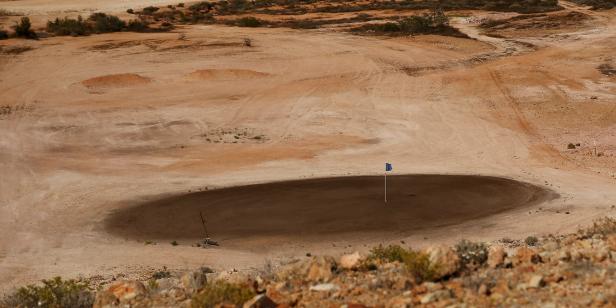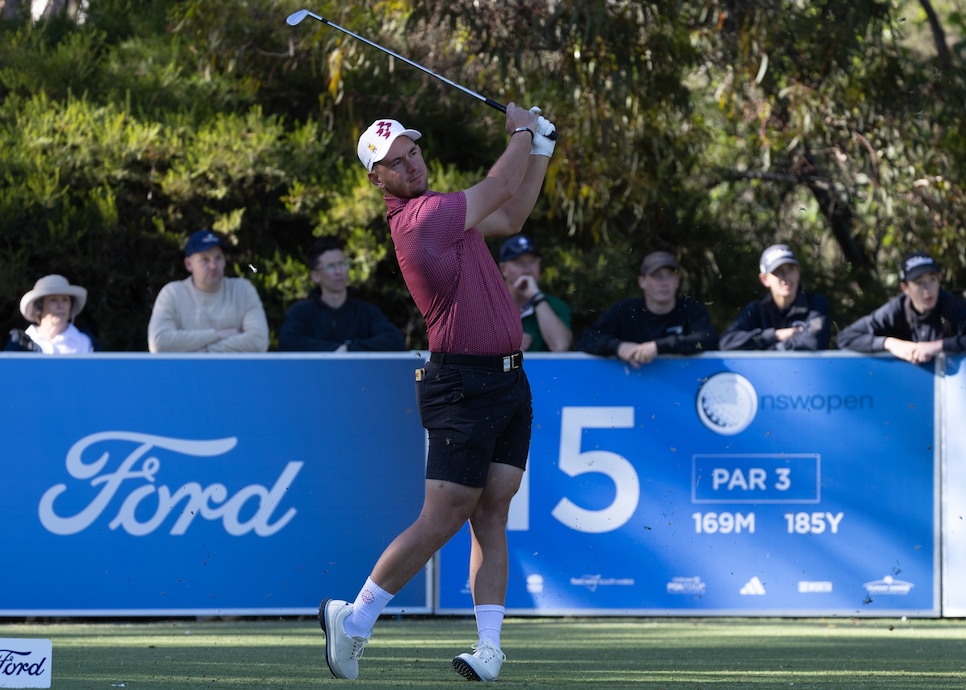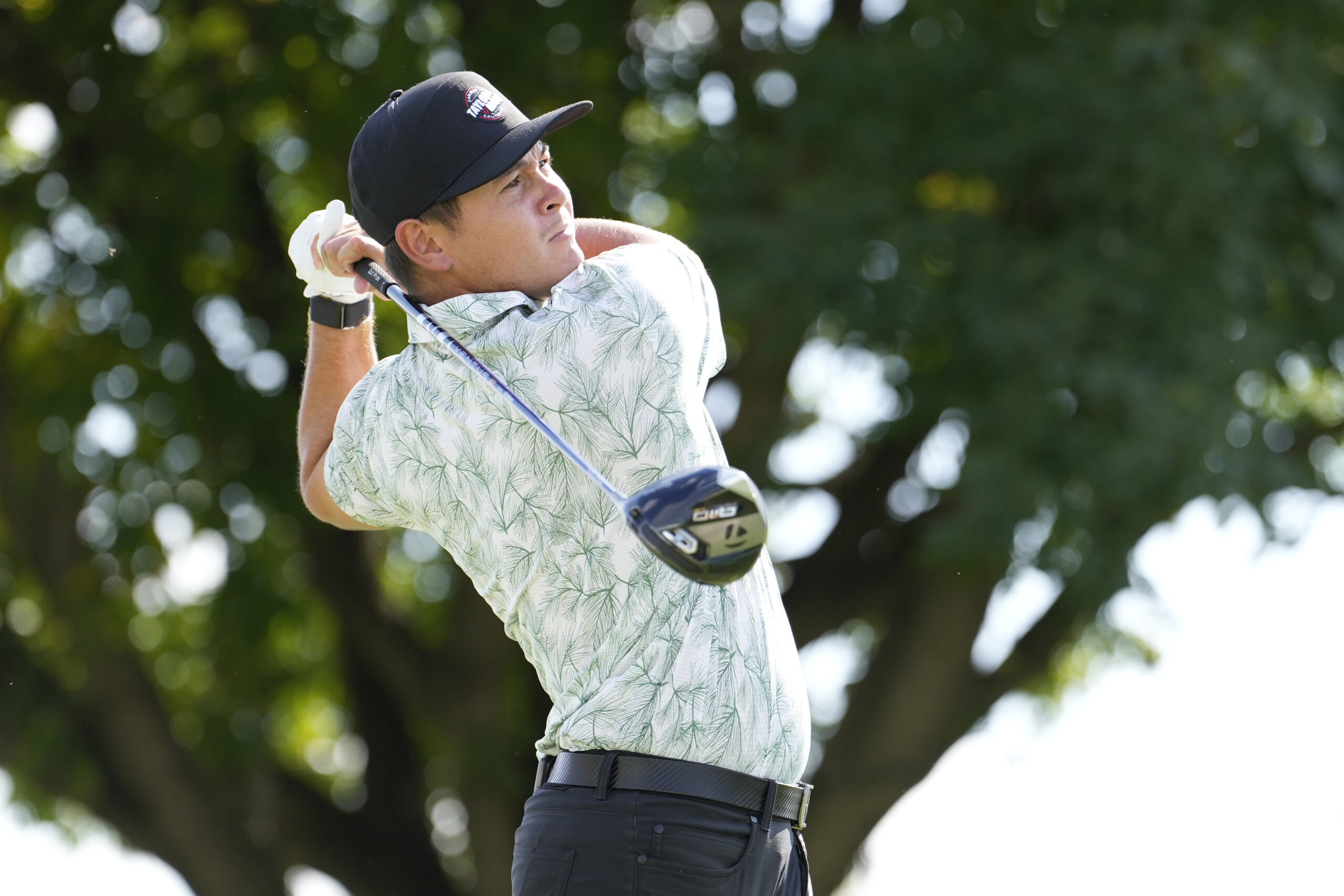Outback Aussie dirt golf course can claim this one-of-a-kind arrangement with St. Andrews

- by Admin
- August 21, 2024

A little more than 9,600 miles and nine time zones from the 18th green of the Old Course at St. Andrews, host of this week’s AIG Women’s Open, is a golf course in the outback of Australia with a quirky place in the game. The Coober Pedy Opal Fields Golf Club, which has no grass on any of its 18 holes, is the only golf club in the world with reciprocal rights at St. Andrews.
So, how did a golf course founded in 1976, in an Australian town of 1,500 people and famous as the Opal mining capital of the world, strike an arrangement with the Home of Golf?
In 2003, a visiting TV producer to Australia, who was making a documentary about opal mining, thought it was charming that such a unique remote town had a golf course. A satellite interview was arranged between the president of the Opal Fields club at the time, Kim Kelly, and then-general manager of the St. Andrews Links Trust, Alan McGregor. The two hit it off and Kelly joked about reciprocal rights to St. Andrews.
McGregor said if the Aussie club gave them an opal mine, they’d think about it. When a package arrived in St. Andrews that included a claim for the “mine”—it was a tiny hole dug in the ground—and several opals, officials at St. Andrews thought it was hilarious and good natured. Reciprocals, of sorts, were granted in 2004.
“We have the letter from the St. Andrews board on the wall in the clubhouse,” club captain Stephen Borrett told Golf Digest. “It’s talked about quite a bit, and if I’m out there when tourists show up and hear about the connection, I try to play a round with them.”
The agreement is for the Balgove ourse, a nine-hole layout that is among seven courses at St. Andrews. Opal Fields members can play two rounds per day (18 holes) with a maximum of eight golfers on any one day. Those rounds can only be played in the month of January—in the thick of Scottish winter. Still, it is the only known reciprocal arrangement with St. Andrews.
Borrett knows of only three members who have used the reciprocal agreement at St Andrews since he got involved with the golf club in 2004.
No members of the St Andrews Links Trust courses have ever played Coober Pedy Opal Fields, as far as anyone knows. Why? There is the 9,000 miles of travel, of course. Perhaps more importantly, the reciprocal arrangement going the other way is also in January. In the southern hemisphere, that’s the peak of summer. Coober Pedy is so hot year-round—summer temperatures reach over 110—that Borrett estimates more than 50 percent of the population lives in underground housing.
Opal Fields is one of the most unique courses in Australia, a nation which contributed nine courses to Golf Digest’s latest edition of the “World’s 100 Greatest Golf Courses”—including former and future Presidents Cup hosts Royal Melbourne and Kingston Heath.
There’s a hilarious sign at the golf club that ironically instructs golfers to “keep off grass.”
With irrigation a significant challenge in Coober Pedy, the tees at Opal Fields are topped with artificial turf while the greens are called “scrapes”. They’re made of local quarry dust mixed with oil that simulates the roll of a putting. Many golf courses in remote parts of Australia use similar greens and there are even sand green tournaments. The fairways have opal mining dirt spread across them and golfers use six-inch squares of artificial grass throughout the round. Because the course is built on rocky ground, the club uses a local rule of “rock relief” in the rough. If golfers find an opal on the course, they can keep it. Coober Pedy opals can be worth thousands of dollars.
Membership at the golf club is just $75 Australian ($50 U.S.) for locals and $100 Australian ($67 U.S.) for non-locals. There are 16 members.
This week, Borrett, who plays at least once a week at Opal Fields, even in summer, will kick his feet up and watch the TV coverage of the AIG Women’s Open, including the two best Australian hopes—major winners Hannah Green, the world No. 5, and No. 13, Minjee Lee.
“I’ll watch every round; I get a buzz knowing we have a reciprocal with a course in St Andrews and it was fantastic when [Australian] Cameron Smith won the [150th] Open at St Andrews in 2022,” Borrett says. “One day, I’d love to visit.”
If he does, no doubt he’ll get a game.
The Latest News
-
November 14, 2024Australian Dollar falls after jobs report
-
November 14, 2024Australian dollar falls after jobs report – MarketPulse
-
November 14, 2024Australia to make big tech liable for citizens’ online safety
-
November 14, 2024Australian Robinson Elected New World Rugby Chairman
-
November 14, 2024Top 5 fields for international students to secure jobs in Australia – VnExpress International




